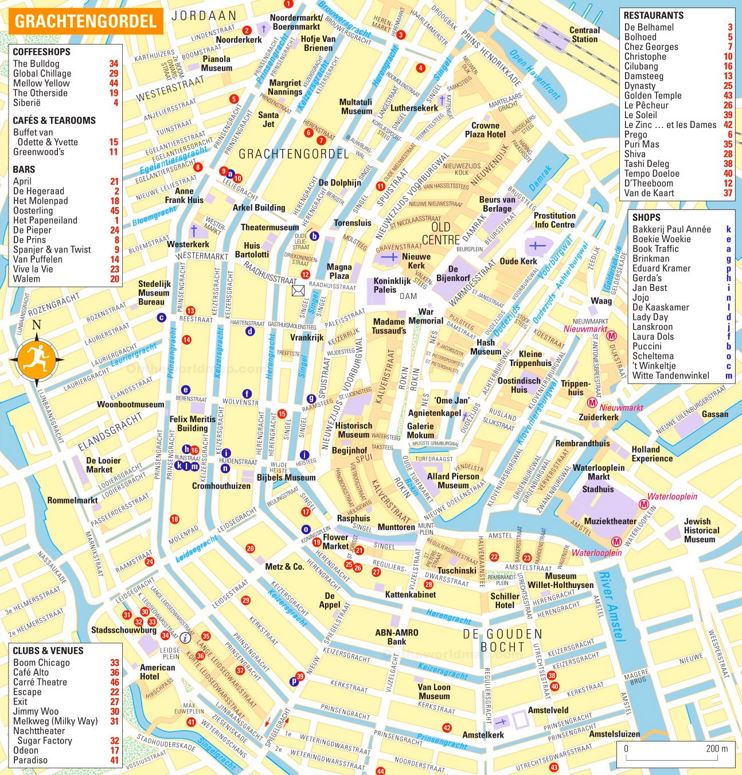Amsterdam Grachtengordel Map
Description:
This map shows shops, restaurants, bars, clubs, coffeeshops, points of interest and sightseeings in Grachtengordel (Amsterdam).
About Grachtengordel
The Amsterdam Grachtengordel (Canal Ring) is a network of concentric canals that forms the historic heart of Amsterdam. Built in the 17th century during the Dutch Golden Age, this architectural and urban planning masterpiece was added to the UNESCO World Heritage List in 2010. The canal ring consists of four main canals: Singel, Herengracht, Keizersgracht, and Prinsengracht, which form semicircles around the old city center.
The construction of the canal ring began in 1613 and was completed in 1665. This massive urban expansion project was designed to accommodate the city's growing population and commercial activities. The canals were not only used for transportation and water management but also served as a means of defense. Along these waterways, wealthy merchants built their elegant canal houses, many of which still stand today. Notable examples include the Museum Van Loon, Willet-Holthuysen Museum, and the Canal House Museum.
The Grachtengordel encompasses approximately 100 kilometers of canals and 1,550 monumental buildings. The area features numerous historic bridges, including the iconic Magere Brug (Skinny Bridge), and distinctive architectural elements such as decorative gables, hooks for hoisting goods, and traditional warehouses. Many of these former merchant houses have been converted into museums, hotels, offices, and restaurants while maintaining their historic facades.
Today, the Canal Ring remains a vibrant part of Amsterdam's urban landscape, hosting various cultural events including the annual Canal Festival and Gay Pride Canal Parade. The district also includes significant landmarks such as the Anne Frank House on Prinsengracht and the Westerkerk, Amsterdam's largest Protestant church. The area continues to serve both as a residential neighborhood and as one of Amsterdam's primary tourist attractions, drawing millions of visitors annually.
You may download, print or use the above map for educational, personal and non-commercial purposes. Attribution is required. For any website, blog, scientific research or e-book, you must place a hyperlink (to this page) with an attribution next to the image used.
Maps of Netherlands
Cities of Netherlands
Cities of Netherlands
Provinces of Netherlands

